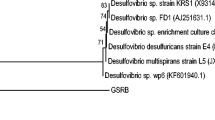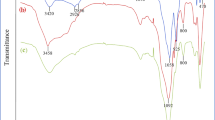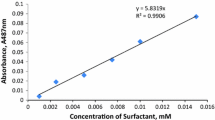Conclusions
A considerable increase in soluble COD and organic acid concentrations was achieved in a continuous process for AD-MSS medium preparation. This reactor utilized less DAF solids and chloroform, and used no additional salts compared with previous investigations. It resulted in a COD of 5000 mg/L, double that of previous studies. This increase in available carbon source for SO2-reducing bioreactors, together with the corresponding decrease in required hydraulic loading to the bioreactors, serves to decrease the capital and operating cost for the proposed microbial SO2-reduction process. Our initial investigation of the immobilization of mixed SRB cultures with alginate or κ-carrageenan gel demonstrated that biocatalyst immobilization did not impair biocatalyst performance. Sulfur dioixde throughputs of 0.19 and 0.17 mmol/(h·L) were achieved when the same amount of biomass was used in free- and immobilized-cell forms, respectively. The κ-carrageenan-cell beads were found to be more stable than the alginate-cell beads under the operating conditions. Summarizing the results of the experiments, it can be concluded that the immobilized-cell bioreactors gave equal conversion rates of SO2 as free cells on a per-biomass basis and have the potential to increase greatly the volumetric productivity of the reactor. Owing to the limited reactor volumes available, maximal biomass loading in the immobilized-cell reactors was not realized in the present study. Future work will increase the biomass concentration in packed and fluidized beds of immobilized biocatalyst in order to increase reactor throughput and further improve the economic viability of the proposed microbial SO2-reduction process.
Similar content being viewed by others
References
US Environmental Protection Agency (1992), National Air Quality Monitoring, and Emissions Report, EPA report EPA-4.
Dasu, B. N. and Sublette, K. L. (1989),Biotechnol. Bioeng. 34, 405–409.
Sublette, K. L. and Gwozdz, K. J. (1991),Appl. Biochem. Biotechnol. 28/29, 635–646.
Selvaraj, P. T. and Sublette, K. L. (1995),Biotechnol. Prog. 11, 153–158.
Selvaraj, P. T. and Sublette, K. L. (1996),57/58, 989–998.
Ghosh, S., Conrad, J. R., and Klass, D. L. (1975),J. Water Pollut. Control Fed. 47, 130–145.
Ghosh, S. (1991),Water Sci. Technol. 33, 1179–1188.
Scott, C. D. (1987),Ann. NY Acad. Sci. 501, 487–493.
Scott, C. D., Woodward, C. A., and Thomson, J. E. (1989),Enzyme Microb. Technol. 11, 258.
Steigman, A. (1950),Anal. Chem. 22, 492, 493.
Author information
Authors and Affiliations
Additional information
The submitted manuscript has been authored by a contractor of the US government under contract DE-AC05-84OR21400. Accordingly, the US government retains a nonexclusive, royaltyfree license to publish or reproduce the published form of this contribution, or allow others to do so, for US government purposes.
Rights and permissions
About this article
Cite this article
Selvaraj, P.T., Meyer, G.B. & Kaufman, E.N. Microbial reduction of sulfur dioxide in immobilized, mixed cultures of sulfate-reducing bacteria with sewage digest as carbon and energy source. Appl Biochem Biotechnol 57, 993–1002 (1996). https://doi.org/10.1007/BF02941779
Issue Date:
DOI: https://doi.org/10.1007/BF02941779




